November 01
12 min. to read
How We Edit for Street Photography (featuring Luminar Neo)
 This genre thrives on candidness and authenticity, emphasizing the realness of life. Street photographers are like urban anthropologists, documenting the human experience. Street photography is not just a style; it is a storytelling art form that captures unscripted moments in urban environments. It's about documenting the essence of the streets, the people, and the hidden stories that unfold in our cities.
This genre thrives on candidness and authenticity, emphasizing the realness of life. Street photographers are like urban anthropologists, documenting the human experience. Street photography is not just a style; it is a storytelling art form that captures unscripted moments in urban environments. It's about documenting the essence of the streets, the people, and the hidden stories that unfold in our cities.
As we navigate the 21st century, street photography has evolved from a niche interest to a global phenomenon. Its importance lies in its ability to capture the heartbeat of modern society. It is a form of visual journalism that reflects the culture, diversity, and the ever-changing dynamics of urban life. Street photographers are the visual historians of our times, preserving the moments that define our generation.
Street photography is valued for its originality and authenticity, as nothing can be staged in advance. But as soon as your picture is taken, you can turn it from an average shot into an artistic masterpiece. That is why the given article includes not only basic street photo tips but also step-by-step instructions on editing street photography with the help of the innovative AI-based photo editor Luminar Neo. Let's look around and find some inspiration!
How To Take Good Street Photography
Blend Into The Environment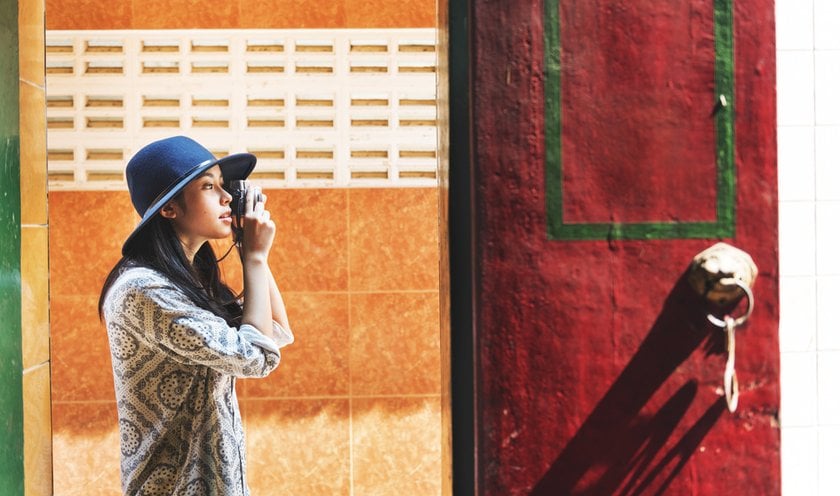
The first rule of thumb for great street photography is to become a hidden part of your surroundings. Dress inconspicuously, like a local, and avoid drawing unnecessary attention to yourself. When you blend in, people are less likely to be aware of your presence, allowing you to capture unposed moments without disrupting the scene. It's like being a silent observer in the theater of everyday life.
The Decisive Moment
Henri Cartier-Bresson coined the term "the decisive moment," referring to that split second when everything aligns perfectly in a scene. In street photography, timing is everything. Be patient, observe your surroundings closely, and wait for that magical instant when the elements harmonize. Whether it is a fleeting expression, a gesture, or an interesting interaction, be prepared to click the shutter at precisely the right moment.
Composition And Perspective
The principles of composition play a vital role in creating compelling street photos. Use the rule of thirds, leading lines, and framing techniques to your advantage. These techniques help you create balanced and visually appealing compositions. When framing your shot, consider the background and foreground elements as well. Interesting backgrounds and foregrounds can add depth and context to your images.
Experiment with various angles and perspectives. Sometimes, getting low or shooting from above can create unique and visually striking images. Feel free to try unconventional approaches to capture your subjects.
Engage With The Subjects
Feel free to interact with your subjects when the opportunity arises. A simple smile, nod, or brief conversation can go a long way in making your subjects feel comfortable and cooperative. Building a quick rapport can lead to more genuine expressions and a sense of connection in your photos. However, it would be best if you always were respectful of people's privacy and boundaries.
Light And Shadows
Dramatic lighting can significantly enhance the mood and impact of your street photographs. Pay attention to how natural light falls on your subjects and the environment. Experiment with capturing silhouettes, strong contrasts, and the play of light on various elements in your frame. The dynamic lighting in urban settings can add depth and intrigue to your images.
Tell A Story
Every great street photo tells a story or conveys a message. Look for elements within the scene that evoke emotions, conflict, or a sense of place. It's not just about capturing a scene; it is about telling the viewer something about the moment you've frozen in time.
Whether it's the expression on a street performer's face, the body language of a pedestrian rushing to catch a bus, or the juxtaposition of different elements in the frame, it aims to create a narrative that engages the viewer's imagination.
The Right Gear
While many street photographers use smaller, inconspicuous cameras, the key is using equipment you're comfortable with. Whether it is a compact mirrorless camera, a smartphone, or a traditional DSLR, your gear should be an extension of your vision. Don't let the camera get in the way of capturing the moment.
Study The Work Of Masters
Study the works of renowned street photographers like Henri Cartier-Bresson, Daido Moriyama, and Vivian Maier. Analyze their compositions, use of light, and storytelling techniques. Learning from the masters can provide valuable insights into the art of street photography.
Embrace Imperfection
If you can take a perfect shot on the first try, then good for you, but pictures rarely come out perfect in such a spontaneous genre. Only some street photos will be perfect, and that's okay. Embrace imperfections and quirks, as they often add character to your images. Street photography celebrates authenticity, and sometimes, it is the imperfections that tell the most compelling stories.
What makes a good photographer is not taking perfect shots but bringing the imperfect ones to a new level of artistry. Post-processing can enhance and refine your street photographs. Understanding basic editing techniques can bring out the full potential of your images. We delve into editing with Luminar Neo below.
Editing Street Photography With Luminar Neo
1. Importing Your Street Shots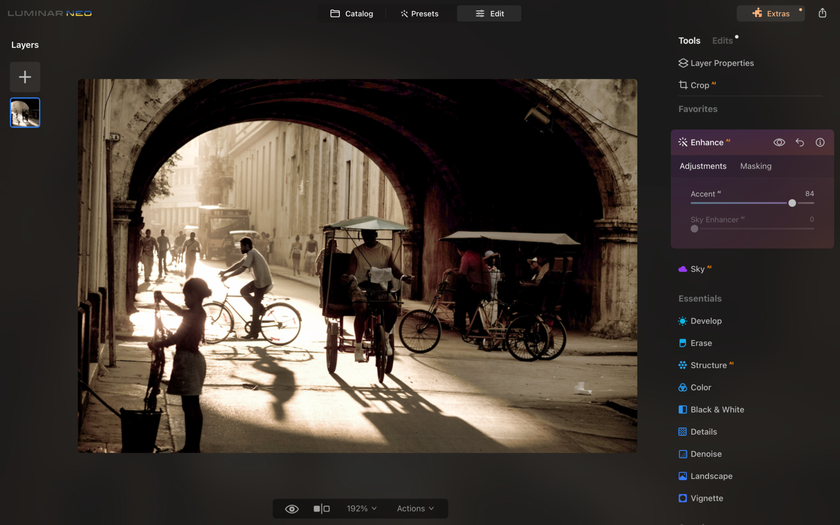
The first step in the editing process is to import your street photographs into Luminar Neo. The software makes this easy, allowing you to organize your images and begin the editing journey. You can select multiple photos and bring them into Luminar Neo with a few clicks.
2. Enhancing Urban Vibes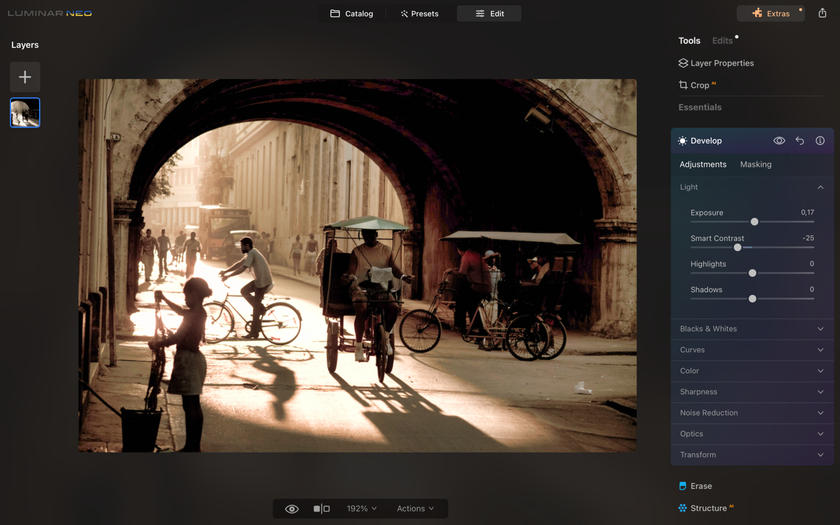
To amplify the urban atmosphere in your street photos, use Luminar Neo's innovative tools. Adjust the lighting, contrast, and color to bring out the city's energy. Whether you want to emphasize the grittiness of an urban street or highlight the vibrant colors of a market scene, Luminar Neo gives you the power to make your images reflect the mood and ambiance you experienced during your street photography sessions.
3. Perfecting Exposure And Color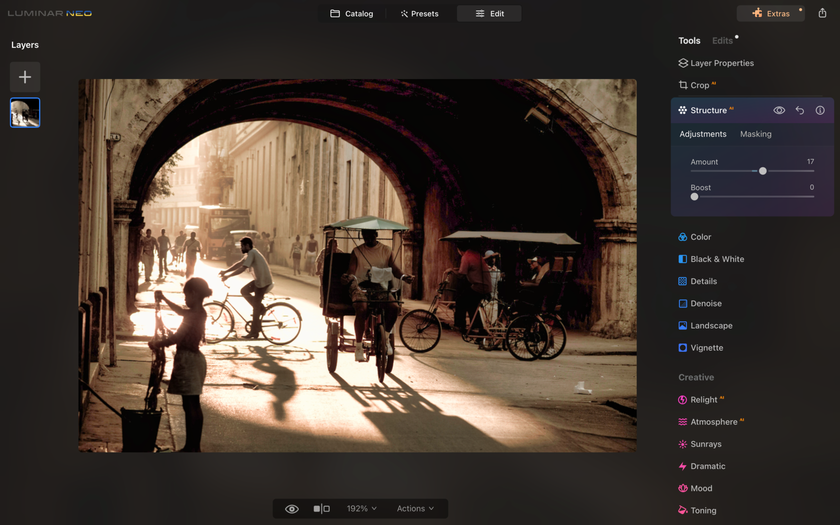
Balancing exposure and color is crucial in street photography. Luminar Neo provides the tools to fine-tune the direction, control highlights and shadows, and enhance the overall color palette of your images. Achieve the right balance between light and color to make your street photographs stand out.
4. Focusing On Details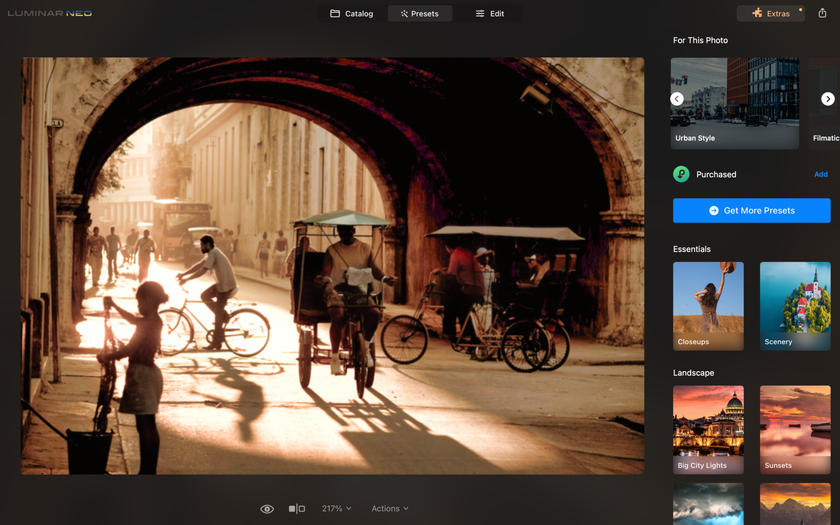
Street scenes are full of intricate details that can add depth and storytelling elements to your photos. Use Luminar Neo's detail-enhancing tools to bring out these subtleties without overdoing it. Sharpen textures enhance fine lines.
5. Creative Effects And Filters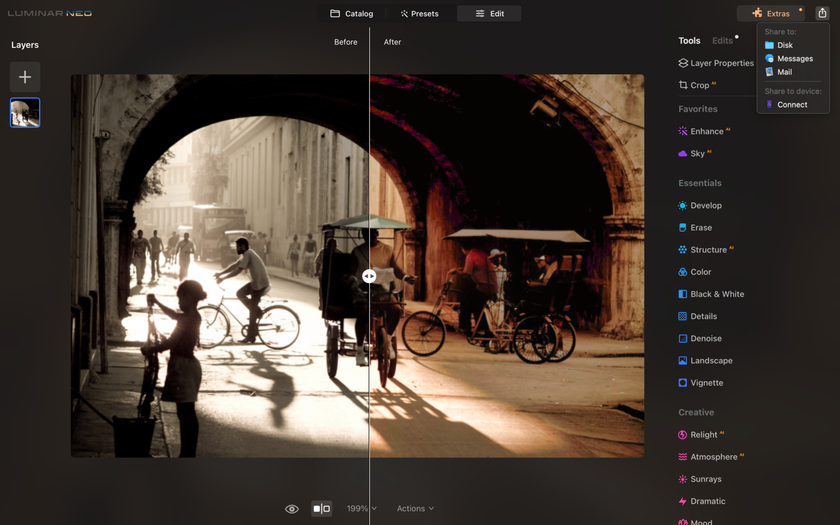
Luminar Neo's creative effects and filters allow you to add a unique touch to your street photography. From vintage products that give your photos a timeless feel to modern artistic filters that bring out the contemporary side of urban life, there are numerous options to explore. Experiment with different effects while staying true to the authenticity of your captured moments.
6. Save Your Work
Once you are satisfied with your edits, save your work in your desired format. Luminar Neo offers various export options, ensuring that your images are ready to be shared with the world or printed for your collection.
With these step-by-step instructions, you will be well-equipped to make the most of Luminar Neo's powerful features to elevate your skills.
Bottom Line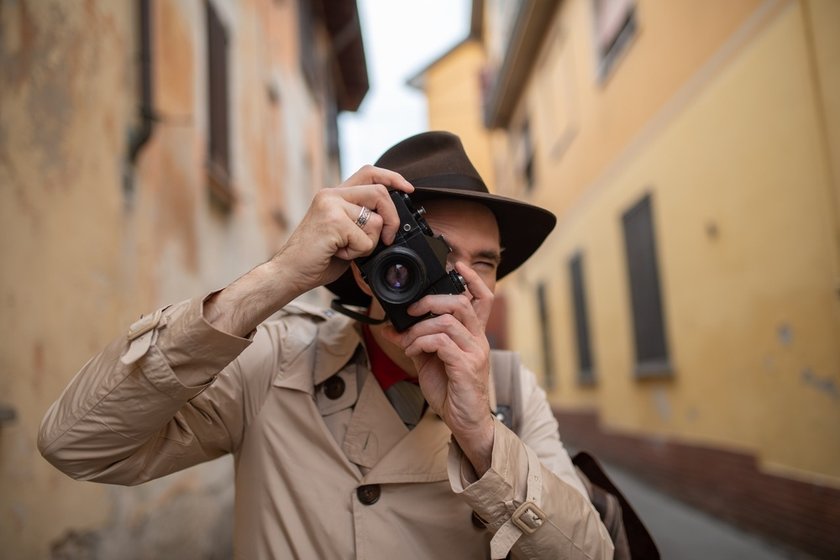
Street photography is a vibrant genre, capturing the heartbeat of modern society in all its authenticity and rawness. It is an art form that speaks to the soul, a form of visual storytelling that brings the streets, the people, and their stories to life.
Luminar Neo simplifies the editing process without compromising on innovation. It is designed to underline the authenticity of the captured moments. With its intuitive tools, you can adjust exposure, color, composition, and fine details while adding a unique touch through creative tools.
Street photography is about patience, timing, and storytelling. Luminar Neo is your ally in this endeavor, helping you reveal the hidden gems within your images, emphasizing the urban atmosphere, and preserving the genuine essence of your street captures.



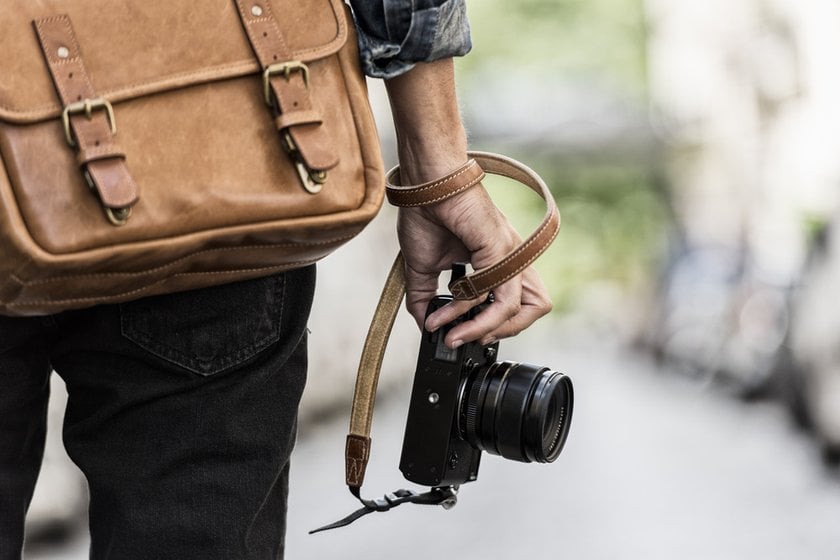






 >
>

